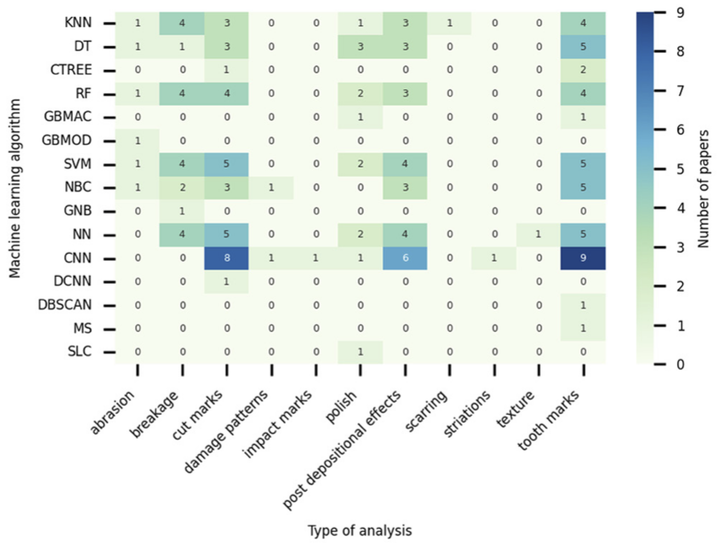Machine Learning Applications in Use-Wear Analysis: A Critical Review

Abstract
Use-wear analysis examines the macroscopic and microscopic patterns of traces left on tool surfaces as a result of use. Recently, machine learning (ML) has been employed as a promising method for automating and standardizing the identification of these traces. While the number of use-wear analysts using ML continues to grow, discussions regarding the effectiveness and appropriate implementation of these methods are ongoing. The main aim of this literature review is to provide recommendations for the more effective application of ML in use-wear analysis and archaeological research, by identifying trends, research gaps, and evaluating the quality of the models developed. There are three key challenges identified. Firstly, the limited adoption of open science practices restricts the creation of large datasets and hinders reproducibility and transparency. Secondly, research efforts are concentrated within limited institutions, focusing on certain research questions, algorithms, raw materials, and use-wear traces. Thirdly, the inadequate quality, quantity, and diversity of data affect the performance of the models being developed. To address these challenges, this paper advocates for the promotion of open science and the systematic gathering of experimental and analytical data. Involving a broader range of institutions can improve research quality and promote greater diversity of perspectives. Collaboration with computer scientists and computational archaeologists is essential to integrate the expertise necessary for designing and implementing effective ML methods. By addressing these factors, this paper facilitates the effective use of machine learning, enabling use-wear analysts and archaeologists to develop robust models that automate, accelerate, and improve their research.